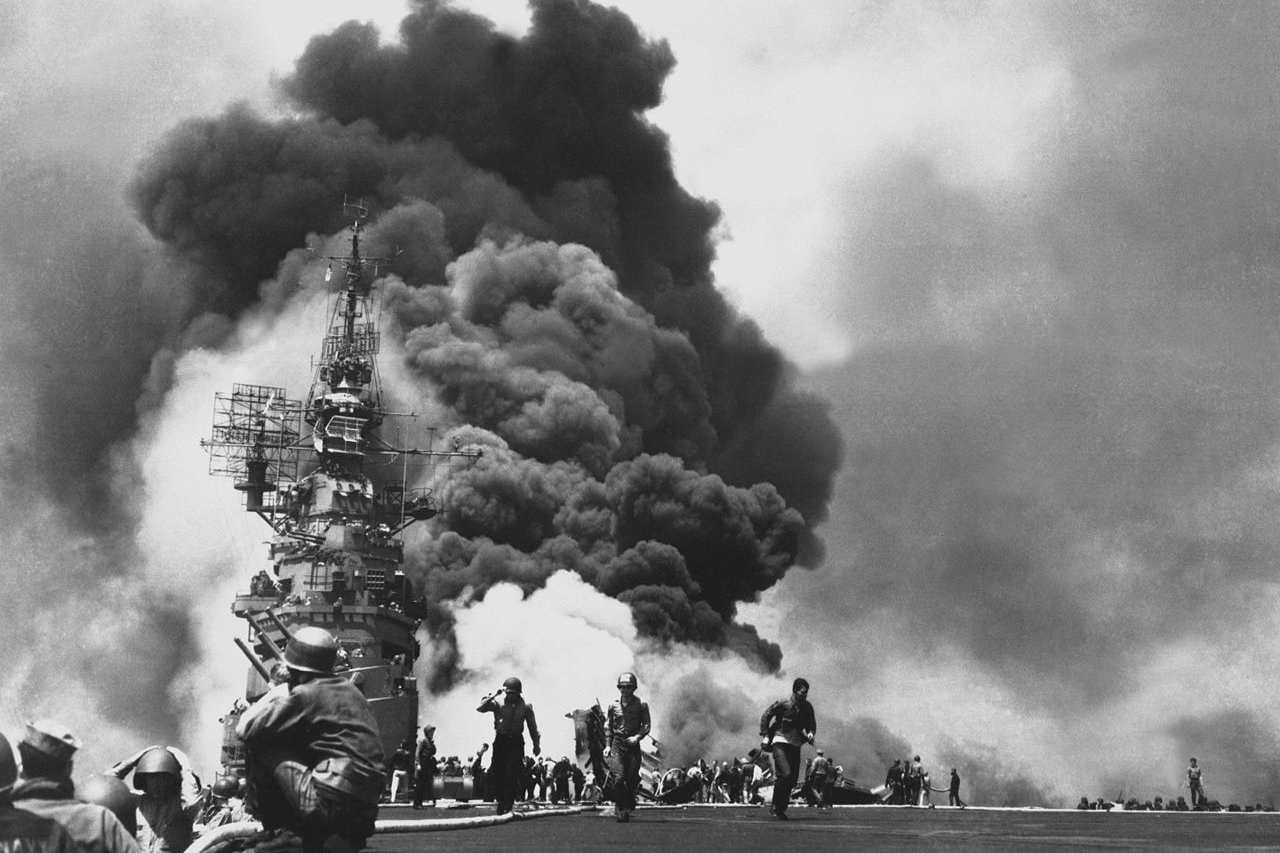
The U.S. aircraft carrier Bunker Hill burns after being struck by two Japanese kamikaze aircraft, May 11, 1945, in the waters between Okinawa and Kyushu, Japan. Photo courtesy of the National Archives.
This article was originally published on April 1, 2020, by the Department of Defense.
The Battle of Okinawa, which began 75 years ago, was the last major battle of World War II — and the bloodiest of the Pacific campaign.
At dawn on Easter Sunday, April 1, 1945, a fleet of 1,300 U.S. ships and 50 British ships closed in for the invasion of the island, which is part of Japan’s southernmost prefecture.
The battle lasted three months and involved four U.S. Army and two Marine Corps divisions.
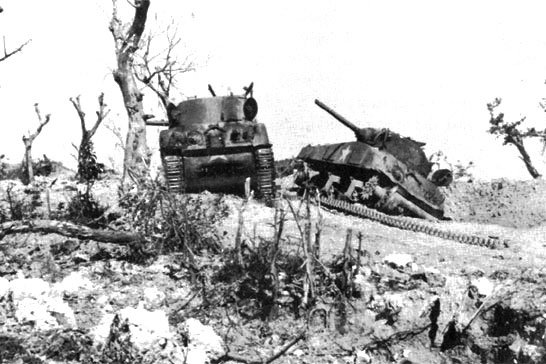
The landings were relatively unopposed because the Japanese refused to fight on the beaches. Instead, they withdrew into caves in the rocky hills to force a battle of attrition, according to John Ray Skates, a historian with the Center of Military History.
The Japanese strategy worked, he said. “U.S. casualties were staggering, the largest of the Pacific war.”
More than 12,000 U.S. soldiers, sailors and Marines died during the fighting.
In the waters around Okinawa, the Japanese launched the largest kamikaze, or suicide, attack of the war. Japanese planes rammed into allied ships, sinking 26 and severely damaging 168. Almost 40% of the U.S. dead were sailors lost to these attacks, Skates said.
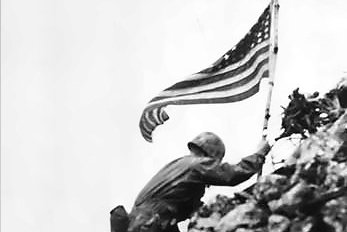
The Japanese military suffered even more, with around 100,000 killed, including many who committed suicide. Around the same number of Okinawan civilians were killed or committed suicide.
Among the Americans killed was Army Lt. Gen. Simon Bolivar Buckner Jr., who was killed by Japanese artillery fire. He was the highest ranking military officer killed during the entire war.
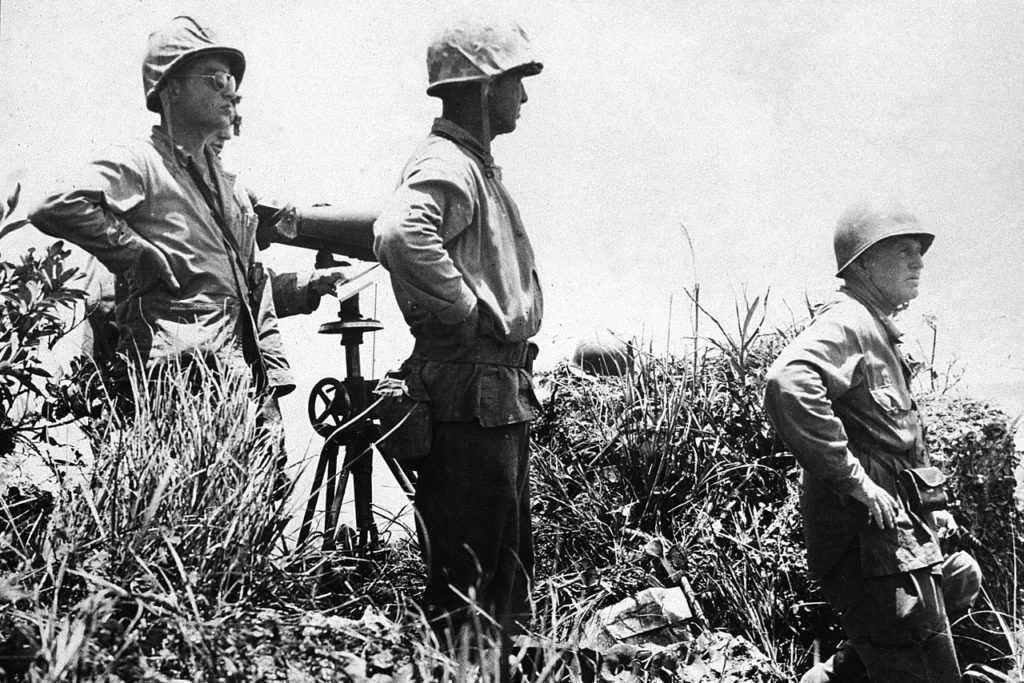
The Battle of Okinawa was a series of battles, including the battle for Hacksaw Ridge. An Army medic during that battle rescued 75 of his wounded comrades. For his valor, Cpl. Desmond T. Doss was awarded the Medal of Honor. What makes his service so unique is that he was a conscientious objector who refused to carry a weapon or kill the enemy. A 2016 movie, “Hacksaw Ridge,” chronicles his story.
The Allies planned to use Okinawa as a base to attack mainland Japan, dubbed Operation Downfall. However, on Aug. 15, 1945, Japan announced its unconditional surrender, thereby avoiding further bloodshed.
In 1972, the U.S. returned Okinawa to Japanese control. Today, Japan is a valued ally of the United States.
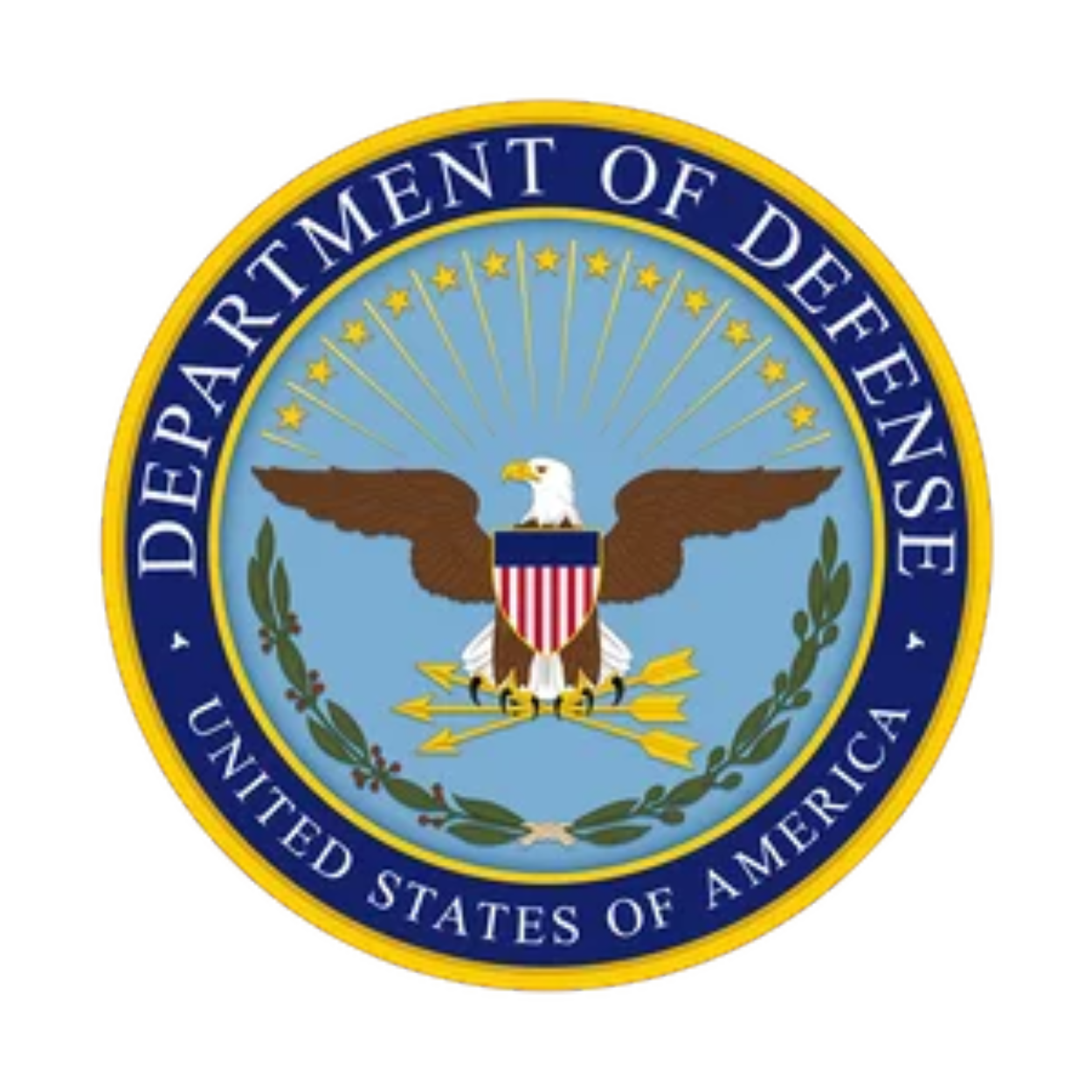
For more content like this, visit defense.gov.
BRCC and Bad Moon Print Press team up for an exclusive, limited-edition T-shirt design!
BRCC partners with Team Room Design for an exclusive T-shirt release!
Thirty Seconds Out has partnered with BRCC for an exclusive shirt design invoking the God of Winter.
Lucas O'Hara of Grizzly Forge has teamed up with BRCC for a badass, exclusive Shirt Club T-shirt design featuring his most popular knife and tiomahawk.
Coffee or Die sits down with one of the graphic designers behind Black Rifle Coffee's signature look and vibe.
Biden will award the Medal of Honor to a Vietnam War Army helicopter pilot who risked his life to save a reconnaissance team from almost certain death.
Ever wonder how much Jack Mandaville would f*ck sh*t up if he went back in time? The American Revolution didn't even see him coming.
A nearly 200-year-old West Point time capsule that at first appeared to yield little more than dust contains hidden treasure, the US Military Academy said.












